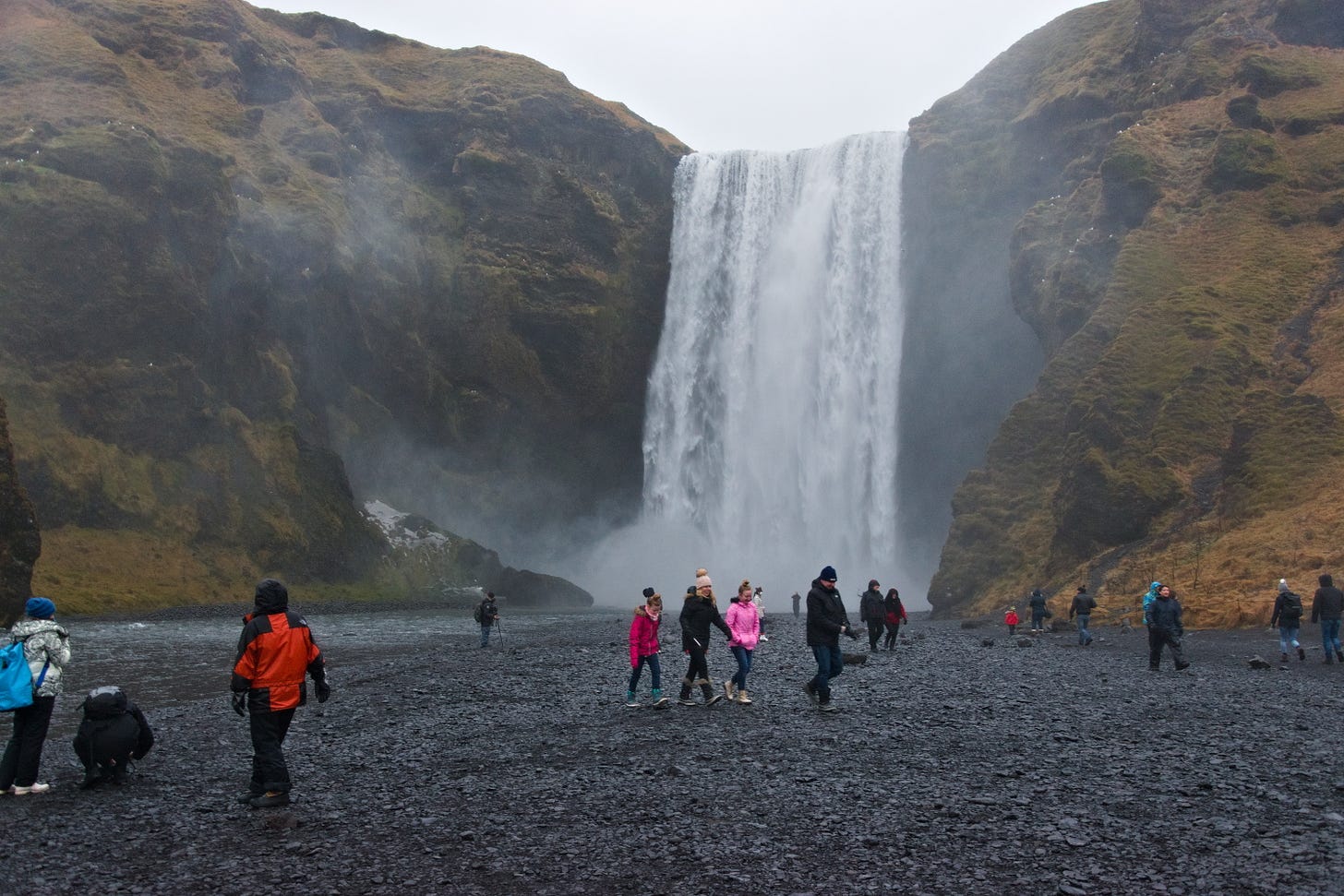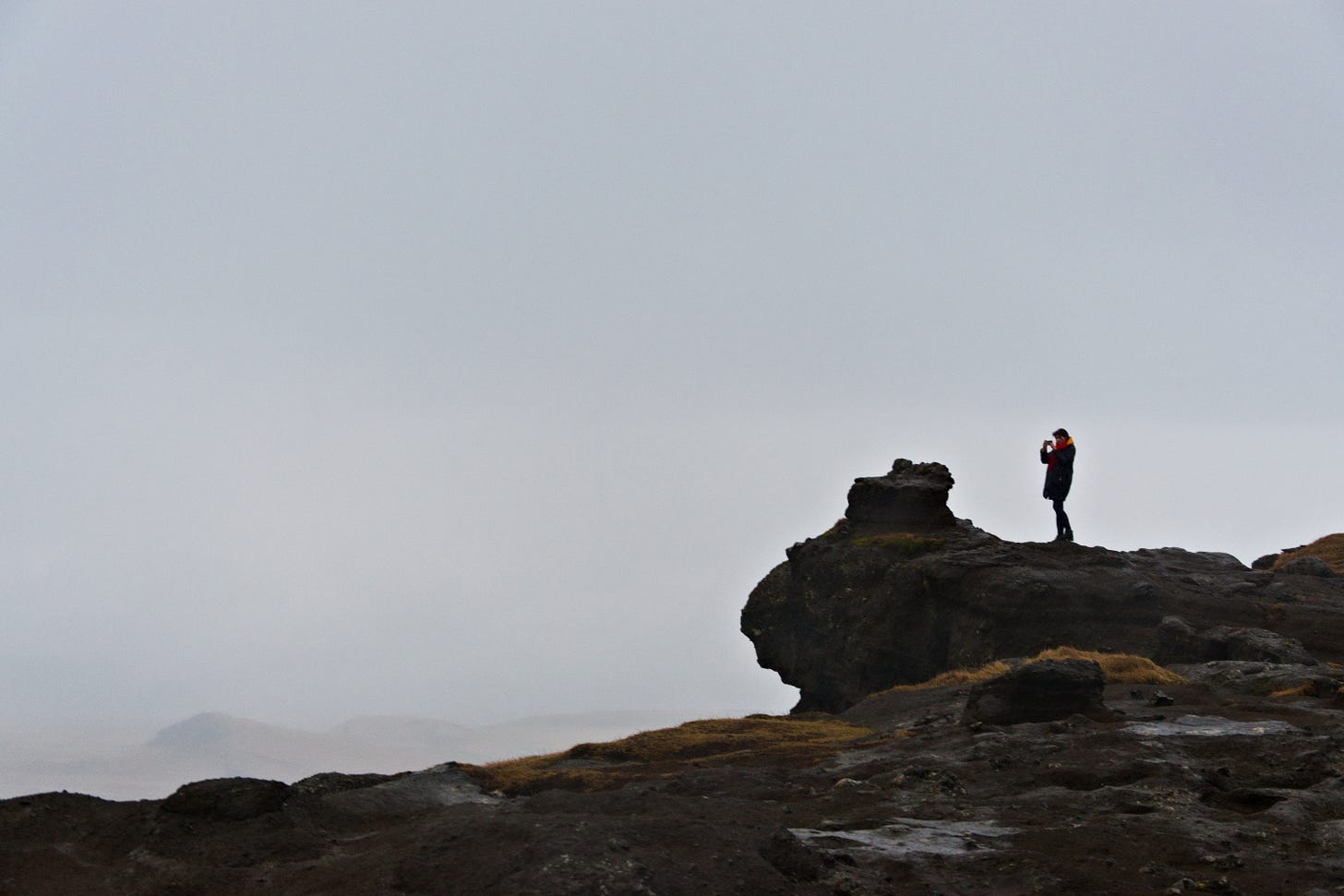Things to do in Iceland, Black Sand Beach
Skogafoss, Seljalandfoss and Reynisfjara Beach the black sand beach
This is the last post about my trip to Iceland, I spent 10 days there in December 2018. In this post, I will describe the south coast, the region of the famous black sand beach, Skogafoss and Vik. In the previous posts, I talked about the Golden Circle, the Reykjanes Peninsula and Reykjavik.
I participated in a volunteer work camp in Reykjavik and we celebrated New Year’s Eve there together with the other volunteers. I did some excursions to get to know the island, and the one to the south coast is one of these. The volunteer organization offered us the opportunity to do these daily excursions paying a fee. We were leaving Reykjavik by car around 10 am and coming back at the latest at 5 pm.
Iceland is an amazing place, nature at its best, here is where I started to practice photography and since then I never stopped.
Iceland
Iceland, known as "The Land of Fire and Ice," is a captivating island nation located in the North Atlantic Ocean. It's renowned for its stunning natural beauty and unique geological features.
Iceland boasts a striking juxtaposition of active volcanoes and sprawling glaciers. With a population known for its warmth and resilience, Iceland has also preserved a rich cultural heritage steeped in ancient sagas and modern creativity. From cascading waterfalls to vibrant cities, Iceland offers an unparalleled blend of natural wonders and vibrant culture that mesmerized me and for sure all the people who visit it.
Vik and the South Coast of Iceland
The third, and last excursion I did during the trip was to the south coast of Iceland, this part is easy to access in winter, and for this, it is a very popular destination for tourists.
The South Coast of Iceland is an impressive stretch of coastline renowned for its dramatic landscapes and natural wonders. This region is characterized by its striking contrast of black sand beaches, rugged cliffs, powerful waterfalls, and vast glaciers.
One of the most iconic attractions along the South Coast is the awe-inspiring Seljalandsfoss waterfall, where visitors can walk behind the cascading water for a unique perspective. Nearby, Skógafoss thunders down in a magnificent display of nature's power. Along this coastline, you'll also find the charming village of Vik, nestled between towering basalt columns and the famous black sand beach, Reynisfjara. The iconic Reynisdrangar sea stacks rise dramatically from the sea, adding to the area's ethereal beauty.
Sólheimajökull
The first stop of our excursion was to visit the glacier Sólheimajökull which is one of the most easily accessible glaciers to reach from Reykjavik, where we were based. Part of the larger Vatnajökull glacier system, Sólheimajökull is a natural wonder that showcases the raw power and beauty of glacial landscapes.
When I arrived at Sólheimajökull I was immediately struck by the glacier's rugged terrain, with crevasses, ice formations, and moulins (vertical shafts in the ice) creating an otherworldly atmosphere. It is possible to have guided glacier walks and ice-climbing expeditions, but this was not in our plan.
Aside from its breathtaking natural beauty, Sólheimajökull also serves as a poignant reminder of the impact of climate change. The glacier has been receding rapidly in recent years, leaving behind visible traces of its shrinking size. This transformation underscores the urgency of environmental conservation efforts and serves as a powerful testament to the evolving nature of Earth's landscapes.
As you can see from the pictures it was a typical winter day, foggy and rainy, so the pictures I took are not good as they could be. Anyway, I think that they can tell you how wonderful this place is, the crazy colours of the ice, the contrast with the black sand and also the dimension of the glacier made me feel amazed. All these remind me that less than a month after I took these pictures I was photographing another place that gave me the same feeling: the desert.
Dyrhólaey lighthouse
The second place we visited was the historic lighthouse that stands as a sentinel overlooking the Atlantic Ocean, offering breathtaking panoramic views of the surrounding coastline.
Constructed in 1910, Dyrhólaey Lighthouse has played a vital role in guiding ships through the treacherous waters of the North Atlantic. The stark white structure stands in contrast to the dark basalt cliffs and black sand beaches that characterize the area.
From the lighthouse, it is possible to marvel at the rugged beauty of Reynisfjara Beach, the next stop of the excursion, the towering Reynisdrangar sea stacks, and the expansive coastline that stretches as far as the eye can see.
I think that this place with this weather is even more beautiful. The black sand beach, the cliffs and the ocean with the fog have something more, a mystic atmosphere that I like.
The name "Dyrhólaey" translates to "Door Hill Island," a reference to the natural arch that once formed at the base of the promontory, though erosion has since altered its appearance. This natural feature is so large and dramatic that one daredevil pilot flew through it in 1993, and boats can easily cruise through its opening.
In addition to its scenic appeal, Dyrhólaey Lighthouse is also a prime location for birdwatching, as the cliffs below are home to a diverse array of seabirds, the most common is the Eider Ducks and the famous puffins during the nesting season (May-September).
Reynisfjara Beach, black sand beach
Reynisfjara Beach is a world-renowned black sand beach, it stands as a testament to the raw, elemental power of nature, offering visitors a captivating experience of Iceland's dramatic coastline.
The beach is characterized by its black pebbles, which are the result of volcanic activity in the region. Towering basalt columns, known as Reynisdrangar, rise dramatically from the sea, adding a surreal and almost mystical quality to the landscape. Folklore surrounds these formations, with local legends claiming they were once trolls turned to stone by the first rays of sunlight.
I have to say that even if it was December the beach was full of visitors, here and the next stop, Skogafoss, were the most crowded places of this tour, but even in this situation and with the winter weather I think that this place is magic, a must to see.
On the beach there is the Hálsanefshellir sea cave and the Gardar cliff, which are composed of dark basalt columns that some resemble a pyramid or organ pipes; this pattern is recognisable in the Hallgrímskirkja church in Reykjavik.
Reynisfjara is known for its powerful waves and strong currents, which can be unpredictable and potentially dangerous. I think this is visible in the pictures below, especially in the second one, which I am particularly proud of because it is dramatic. The powerful ocean is something I will never forget from this trip to Iceland, the first time I was on a shore in winter.
Skogafoss
The next stop was at another iconic place: Skógafoss is one of Iceland's most famous and powerful waterfalls. Standing at an impressive 60 meters (197 feet) tall and spanning a width of 25 meters (82 feet), Skógafoss is a sight to behold. The waterfall originates from the Skógá River, which is fed by the melting waters of the Eyjafjallajökull glacier. The immense volume of water plunges over the edge with tremendous force, generating a continuous spray that creates rainbows on sunny days.
A well-maintained staircase adjacent to the waterfall allows visitors to ascend for a closer view and even venture to the top for a panoramic perspective of the surrounding landscape. This vantage point offers breathtaking views of the lush greenery, cliffs, and rugged terrain that characterize the area.
Legends and folklore surround Skógafoss, with stories of hidden treasures said to be buried behind the cascade. According to local lore, a Viking settler buried a chest of gold and valuables in a cave behind the waterfall, though it has never been found. Locals found the chest years later but were only able to grasp the ring on the side of the chest before it disappeared. The ring has allegedly been given to the local church and now is at the Skógar Museum.
Skogafoss is a famous set for movies, TV shows and TV series like Vikings, Game of Thrones, Thor: The Dark World, and The Secret Life of Walter Mitty.
After the panoramic point on the top, there is a path that follows the river, I followed it for a while, I would had the possibility to go further with the hike but I didn’t have the time, the landscape was amazing the fog, the mountains and the river.
Seljalandfoss
The last place we visited was the waterfall of Seljalandsfoss. What sets this place apart is its unique feature: visitors can walk behind the cascading water, providing a truly immersive and unforgettable experience.
Standing at a height of approximately 60 meters (197 feet), Seljalandsfoss originates from the Seljalandsá River, which is sourced from the Eyjafjallajökull glacier. The waterfall plunges over a rocky precipice, creating a mesmerizing veil of water that glistens in the sunlight.
Before Seljalandfoss, we went to Gljúfrabúi, often referred to as the "Hidden Waterfall,". What makes it unique is its concealed location within a narrow gorge, partially hidden from view by cliffs.
Probably because I was tired after this long excursion or maybe because it was raining and getting dark, I didn’t see this waterfall. Between Gljufrabui and Seljalandfoss there is less than a kilometre, the area between the two waterfalls is lush and green, with moss-covered rocks and cliffs adding to the enchanting atmosphere.
We approached Seljalandfoss from the side since we were coming from Gljúfrabúi, but there is a well-maintained trail that allows visitors to approach Seljalandsfoss from the front, the highlight of the experience is undoubtedly the path that leads behind the waterfall. This allows intrepid explorers to stand in the cavernous space created by the falling water, providing a unique perspective of the surrounding landscape.
The weather was getting worse, rainy and dark, so the pictures were affected by this. I arrived too late to take a significant picture of Seljalandfoss, but I enjoyed the waterfall, I have to say that after many waterfalls they look all the same, but this one is unique and even if it was late I loved it.
This was the last post about this Icelandic adventure, for me it was a great experience, I saw some of the most beautiful landscapes I’ve ever seen and I learned a lot. I’m sure I will be back one day because I saw only a part of the island, and I want to see it in summer. I hope you liked reading about it, if yes subscribe, share and let me know what you think about it.






























I visited black sand beach! Great place. I loved the drive along the coast to get to it. Beautiful light!